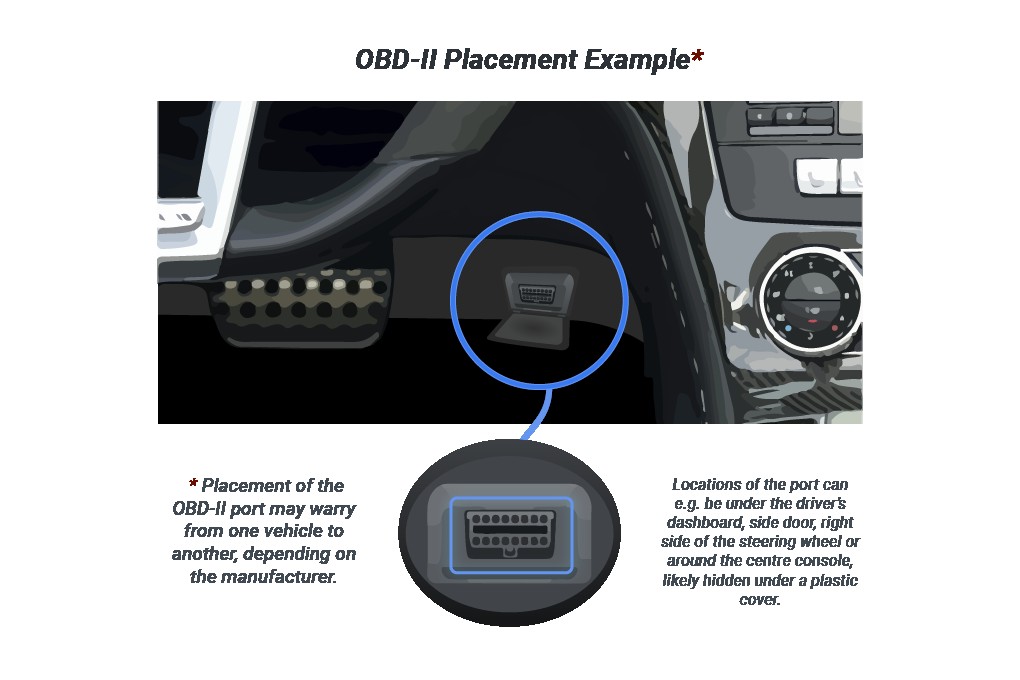The OBDII (On-Board Diagnostics II) port is a crucial component in modern vehicles, acting as a gateway to your car’s computer system. This port allows mechanics and car owners to access vital diagnostic information, enabling them to identify and troubleshoot issues effectively. But where exactly is this important port located? This guide will provide a comprehensive overview of common Obdii Port Locations, helping you easily find it in your vehicle.
Common OBDII Port Locations
While the OBDII port location can vary slightly depending on the make and model of your vehicle, it’s typically found within the driver’s reach. Here are the most common places to look:
- Under the Dashboard: The most frequent location is beneath the steering wheel, on the driver’s side. Look for a trapezoidal-shaped connector with 16 pins.
- Near the Steering Column: Sometimes, the port is located on the steering column itself, either above or below the steering wheel.
- Inside the Center Console: In some vehicles, the OBDII port might be hidden inside the center console, often under a cover or within a compartment.
- Behind the Ashtray or Cigarette Lighter: Less common but still possible, the port could be tucked away behind the ashtray or cigarette lighter panel.
- Passenger Side: Occasionally, particularly in some European models, the port can be found on the passenger side, under the glove compartment or dashboard.
Using Your Vehicle’s Resources
If you’re having trouble locating the OBDII port, consult these resources:
- Owner’s Manual: Your vehicle’s owner’s manual is the best source for precise information regarding the OBDII port location.
- Online OBDII Port Locators: Several websites and online tools specifically designed to help you find the OBDII port in various car models. Simply enter your vehicle’s year, make, and model to get detailed instructions.
Understanding the OBDII Connector
The OBDII connector is a standardized 16-pin (2×8) female connector, adhering to the J1962 standard. Each pin has a specific function, enabling communication with various vehicle systems for diagnostic purposes.
Why is the OBDII Port Important?
The OBDII port provides access to a wealth of information about your vehicle’s performance, emissions, and overall health. It enables:
- Diagnostics: Mechanics use the port to read diagnostic trouble codes (DTCs), which indicate specific malfunctions.
- Emissions Testing: Emissions testing centers utilize the OBDII port to verify compliance with environmental regulations.
- Vehicle Monitoring: Devices can be connected to the port to monitor real-time data such as speed, engine RPM, and fuel consumption.
Beyond Basic Diagnostics: Advanced OBDII Tools
While basic OBDII scanners provide valuable information, advanced tools like the AutoPi CAN-FD Pro offer more comprehensive data and insights.
Conclusion
Locating your vehicle’s OBDII port is essential for diagnosing car problems and ensuring optimal performance. By understanding common locations and utilizing available resources, you can quickly find the port and unlock valuable insights into your car’s health. Whether for basic troubleshooting or in-depth performance analysis, the OBDII port is an indispensable tool for every car owner.


